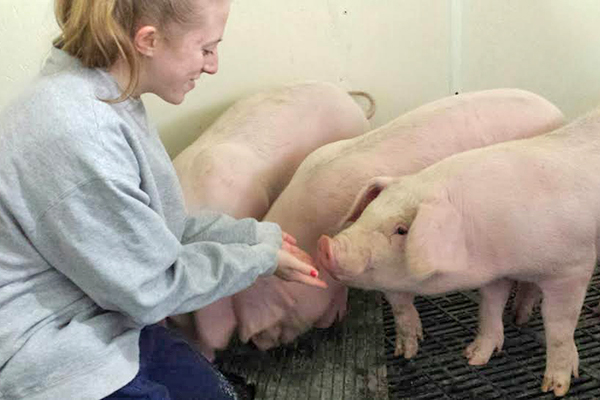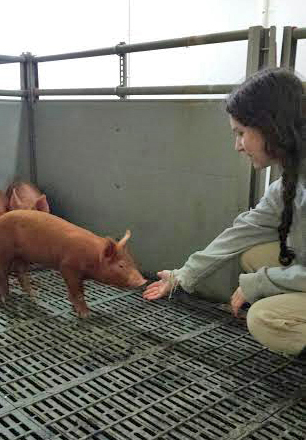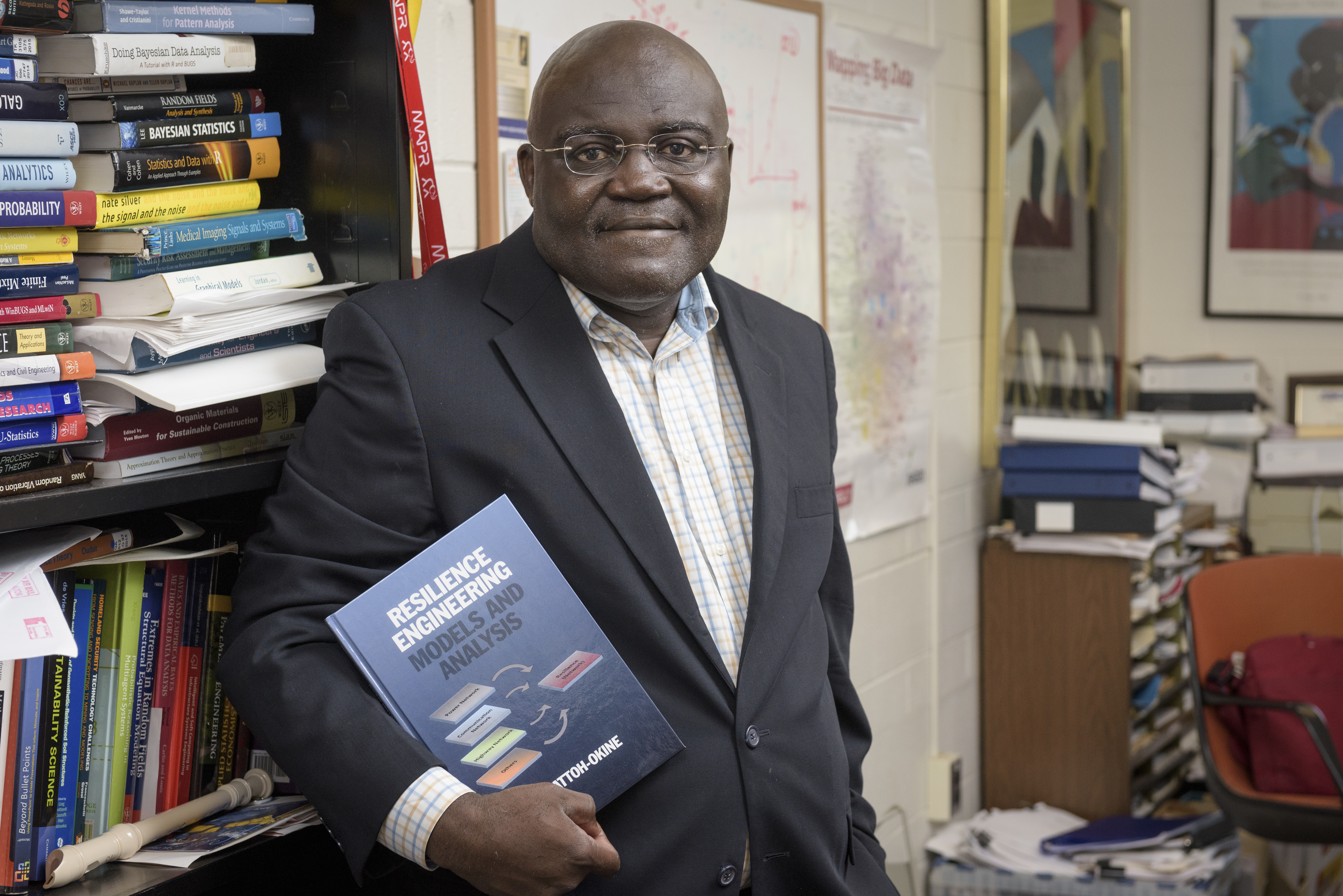Big pigs
UD students help New Bolton Center with research on sows
9:49 a.m., June 10, 2015--It’s not every day students get to work with 600-pound pigs but that’s exactly what University of Delaware undergraduates Brittney Andersen and Amy Cherico found themselves doing during internships at the Penn Vet Swine Teaching and Research Center in Kennett Square, Pennsylvania.
Andersen, who recently graduated with a bachelor’s degree in pre-veterinary medicine and animal biosciences, and Cherico, a junior majoring in pre-veterinary medicine and animal biosciences, started the internship in January and worked with Kristina Horback, a postdoctoral fellow at the University of Pennsylvania’s Department of Clinical Studies-New Bolton Center, helping her with a study on sows — adult female pigs — to see if the pigs could be trained to do simple tasks.
People Stories
'Resilience Engineering'
Reviresco June run
The primary project on which they worked involved pigs and colors.
“A white screen would come on and if the pigs touched it, they would receive food. They would eat it and if the white screen came on again and they touched it again, they would get more food,” said Cherico. “But then, if a different color came on and they hit it, they wouldn’t get any food.”
Cherico said the work was to see if the pigs could be trained “to know the difference between the two colors.”
The students helped Horback get the pigs into a room, distributed feed and staffed a computer that captured the research data on the sows.
On a related project, Cherico and Andersen analyzed the behavior of piglets. “We coded five-minute videos of piglets of varying ages and there are codes to use to note whether they walk around, sit down or make noises,” Cherico said. The research is designed to determine how pigs of different ages and breeds react to a new environment, and the students entered the information then sent Horback the results.
The UD students carpooled to the center and Andersen explained that after changing into their work clothes and putting on boots, they would “just get right into it and try to find which sow was where and get them into the room and then start the whole process.”
They said that finding the pigs was the hardest part, as it wasn’t easy to distinguish among the massive individual animals in a group of 50 or 60.
There were certain pigs that would see the girls and understand what was about to happen, Cherico said. “The ones that got used to the training knew whenever they saw us, they were going to get food, so they would kind of run down and get excited. They got to recognize us, which was cool.”
Andersen added that these pigs would be “right at the gate.”
There were others, however, who didn’t want to move and, as the students explained, if a 600-pound pig doesn’t want to move, it’s not going to move.
Cherico said she enjoyed all aspects of the internship. “It was fun. The best part for me was just the hands on aspect of it,” she said. “It was really cool to actually be able to handle the pigs and be a part of the research and see what was going on firsthand. That was pretty cool.”
Andersen added that the internship helped expand the knowledge they gained from taking the swine production class offered at UD and taught by Lesa Griffiths, professor in the Department of Animal and Food Sciences.
“We took the swine production class here in the fall and I had never worked with pigs before that so I was like, ‘I really like this.’ I found out about the internship opportunity and I just liked being able to continue to work with the sows and learn more about the facility,” said Andersen.
Both said the swine production class at UD was great and that they would recommend it to anyone.
“That’s why Delaware is awesome, all the animals are here,” said Cherico.
As for the next steps in their veterinary pursuits, Andersen said she has applied to graduate school for animal science and also has applied for government fellowships, one focused on infectious disease. Cherico said she will spend the summer completing her veterinary school applications.
Any UD students interested in an internship at the Penn Vet Swine Teaching and Research Center should contact Kristina Horback.
Article by Adam Thomas












